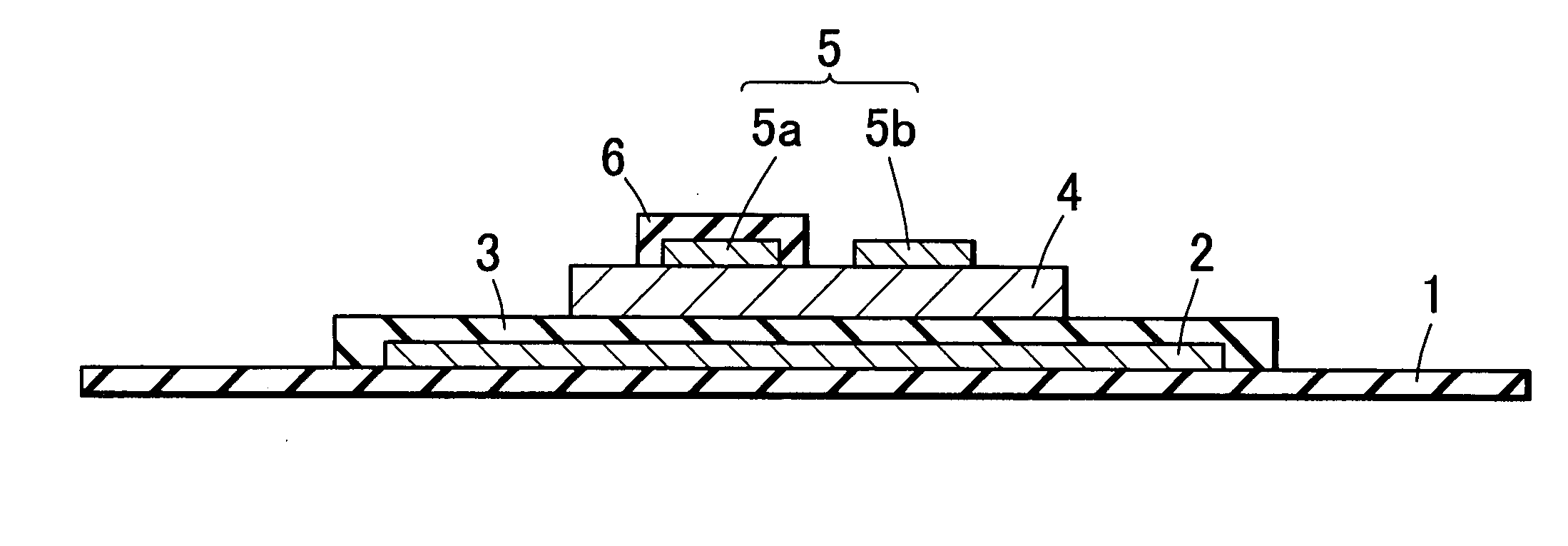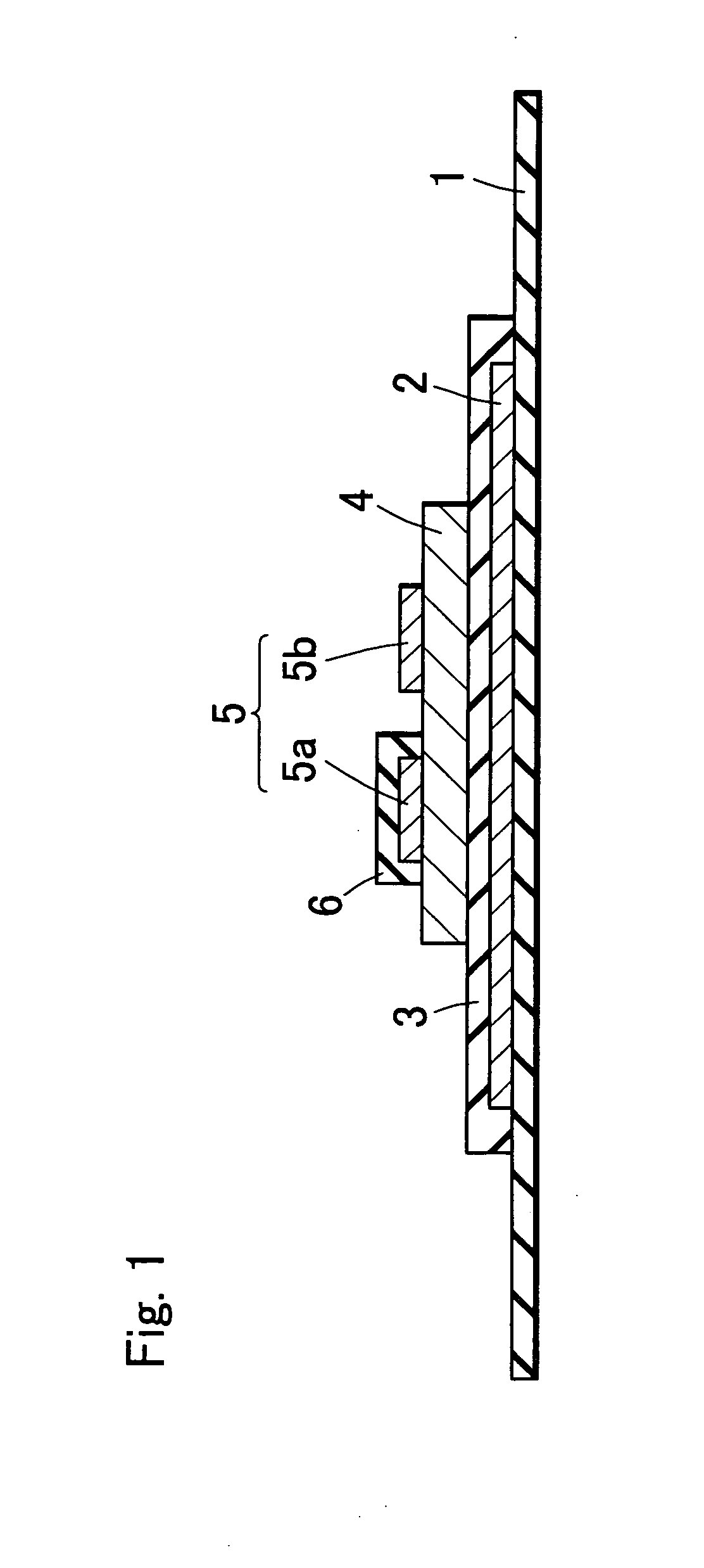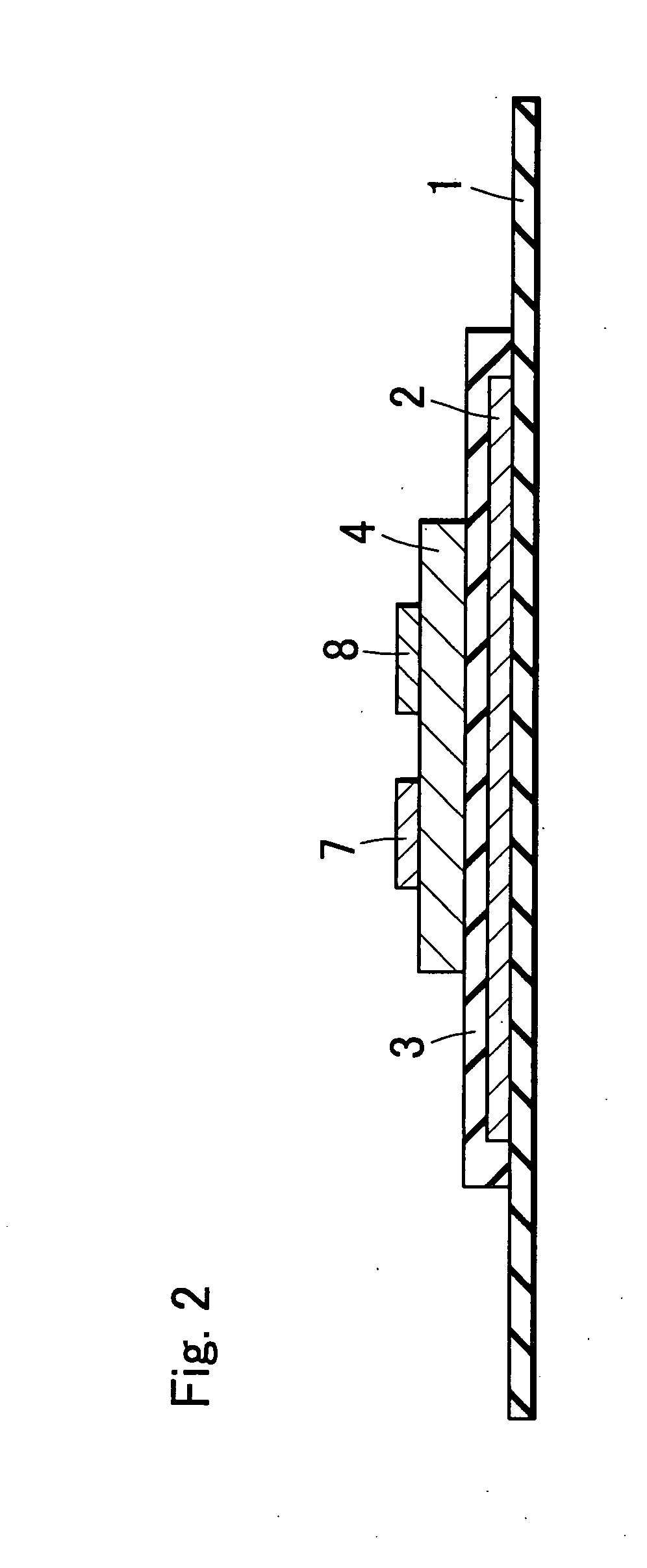Gas sensor and detection method and device for gas.concentration
a gas sensor and concentration technology, applied in the direction of instruments, liquid/fluent solid measurement, electrochemical variables of materials, etc., can solve the problems of high energy consumption, significant burden on the battery drive, and high cos
- Summary
- Abstract
- Description
- Claims
- Application Information
AI Technical Summary
Benefits of technology
Problems solved by technology
Method used
Image
Examples
embodiment 1
[0064] Embodiment 1
[0065] A gas sensor of embodiment 1 according to the present invention comprises a heating element stacked on the heat-resistant glass base substrate in the form of a plate, an insulating layer and a layer of solid electrolyte, and has further a pair of electrodes and a layer of porous oxidation catalyst formed so as to cover the one electrode surface on the layer of solid electrolyte.
[0066] The basic operations of the gas sensor of this embodiment 1 are as follows. That is, the solid electrolyte becomes active condition by energization to the heating element and heating, and in this condition, the concentration of carbon monoxide is sensed with the output of electroddmotive force between electrodes, which is based on the difference between chemical potentials, produced in the event of the generation of carbon monoxide, between the one reference electrode provided with a porous catalyst layer and the other detecting electrode not being provided with a porous catal...
embodiment 2
[0069] Embodiment 2
[0070] A gas sensor of embodiment 2 according to the present invention is constructed by forming a heating element, an insulating layer and a layer of solid electrolyte on the glass base substrate in the form of a plate and by forming a first electrode and a second electrode on the solid electrolyte film.
[0071] Next, the operation of the gas sensor of this embodiment 2 is described. In this gas sensor, by energization to the heating element and heating, the solid electrolyte becomes active condition and the electromotive force is produced between the first electrode and the second electrode, but this electromotive force varies depending on whether carbon monoxide is generated or not. That is, since the difference of electromotive force between the first and the second electrodes in the cases of the generation of carbon monoxide and without the generation of carbon monoxide takes the value uniquely corresponding to the difference between chemical potentials which a...
embodiment 3
[0073] Embodiment 3
[0074] A gas sensor of embodiment 3 according to the present invention has the same basic constitution as the previous embodiments land 2, and is constructed by using particularly a substrate selected from the group of quartz, crystalline glass and glazed ceramic as the heat-resistant glass base substrate in the form of a plate. Any of these base materials has desirable characteristics in the operation by pulsed driving of the invention, to which the thermal shock is applied repeatedly, because in addition to having basic heat resistance and insulating properties, it has a thermal shock resistance coefficient of 200.degree. C. or higher and the low thermal conductivity, and is superior in thermal shock resistance even when heat is input in a short time and capable of transferring the heat effectively to the element side without transferring the heat to the substrate when possible. The operations as the gas sensor of this embodiment are similar to that of the previ...
PUM
| Property | Measurement | Unit |
|---|---|---|
| thickness | aaaaa | aaaaa |
| thickness | aaaaa | aaaaa |
| temperature | aaaaa | aaaaa |
Abstract
Description
Claims
Application Information
 Login to View More
Login to View More - R&D
- Intellectual Property
- Life Sciences
- Materials
- Tech Scout
- Unparalleled Data Quality
- Higher Quality Content
- 60% Fewer Hallucinations
Browse by: Latest US Patents, China's latest patents, Technical Efficacy Thesaurus, Application Domain, Technology Topic, Popular Technical Reports.
© 2025 PatSnap. All rights reserved.Legal|Privacy policy|Modern Slavery Act Transparency Statement|Sitemap|About US| Contact US: help@patsnap.com



